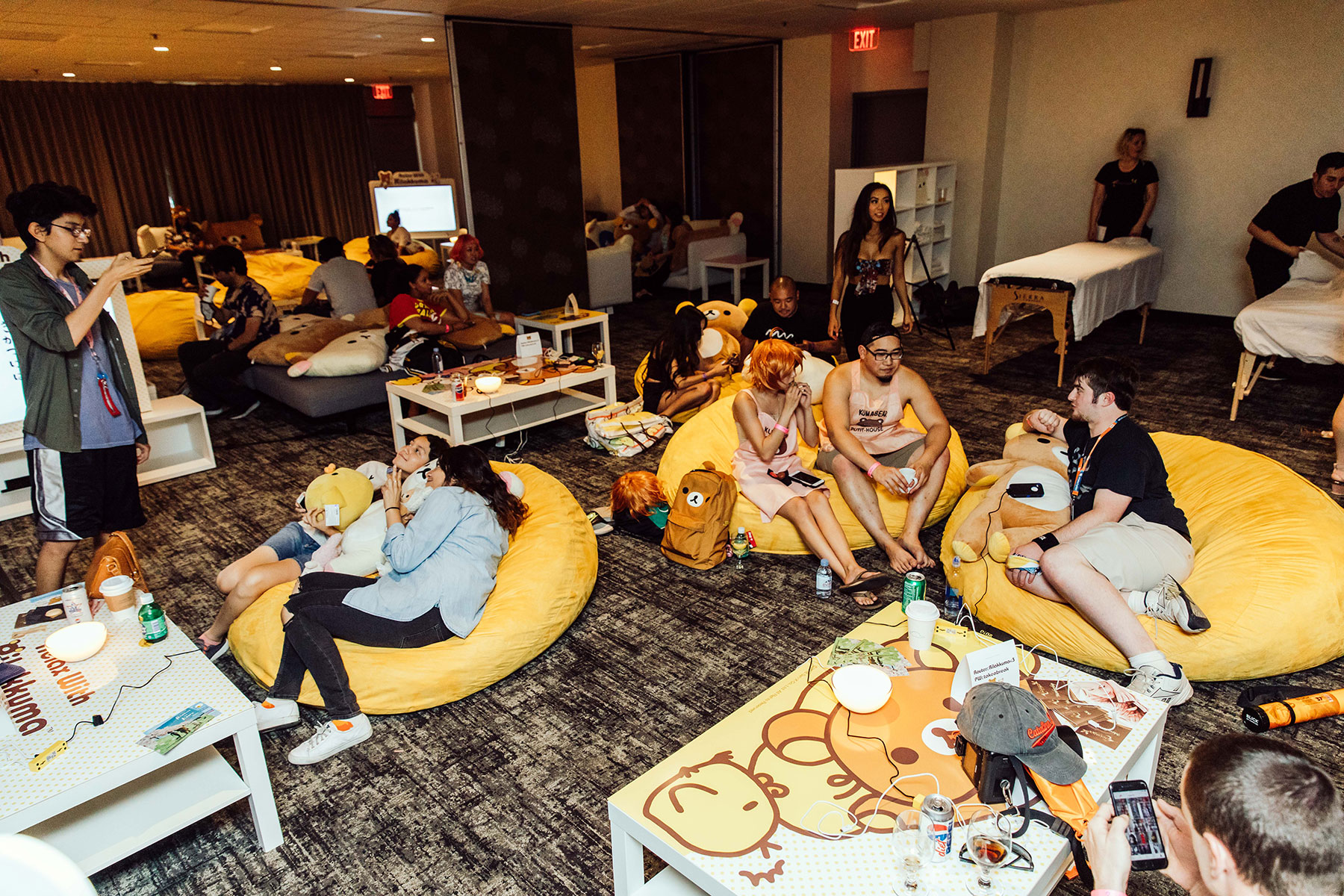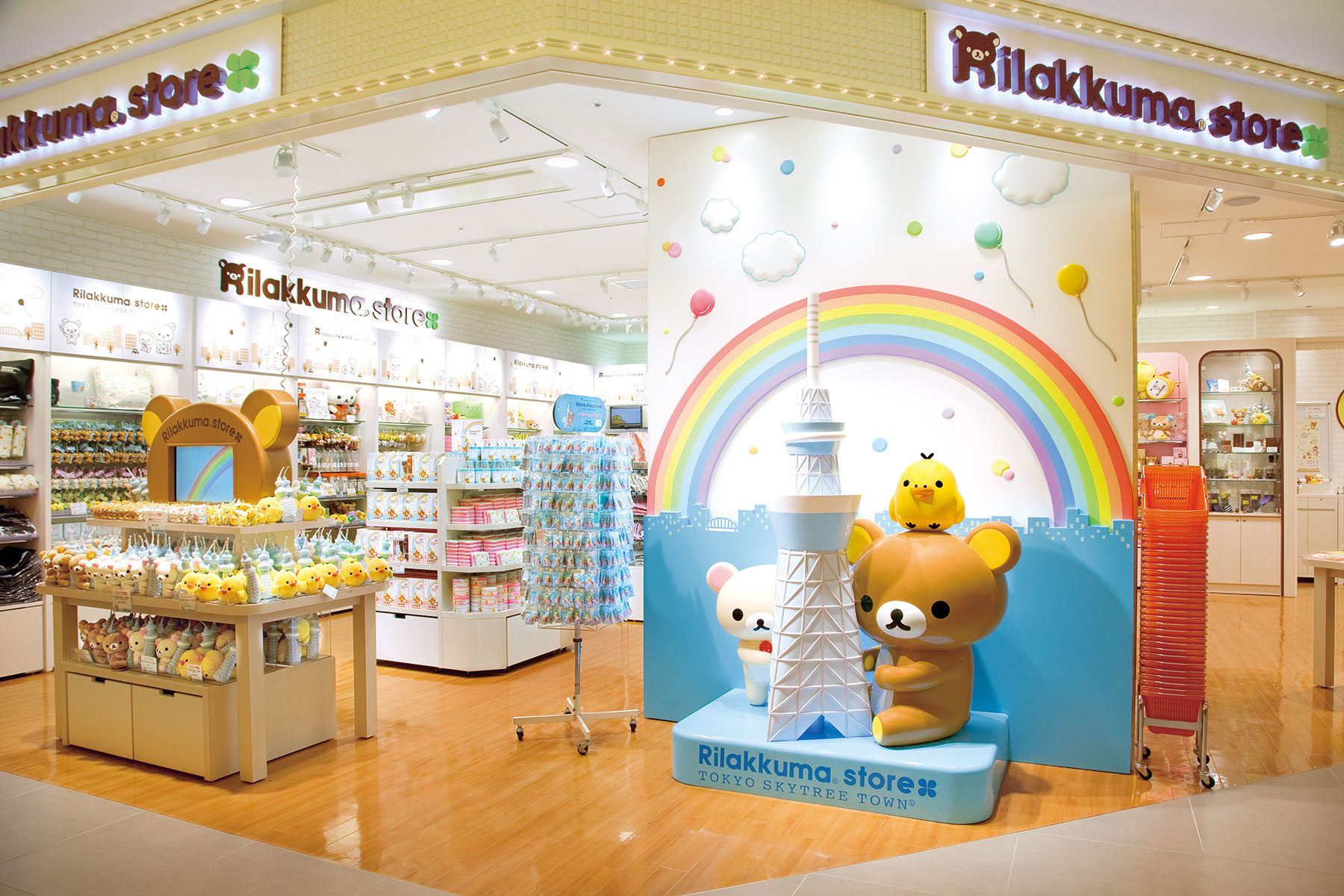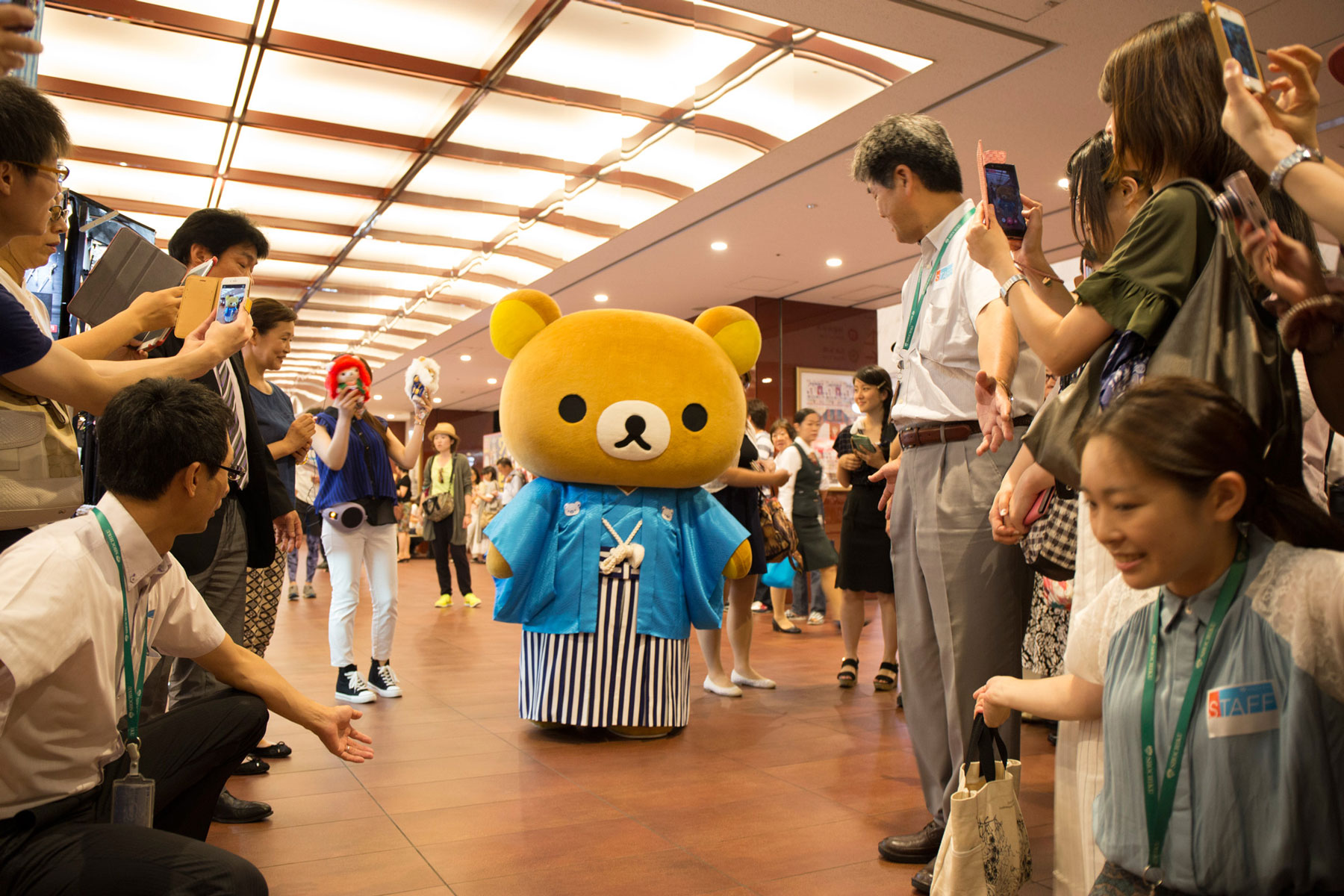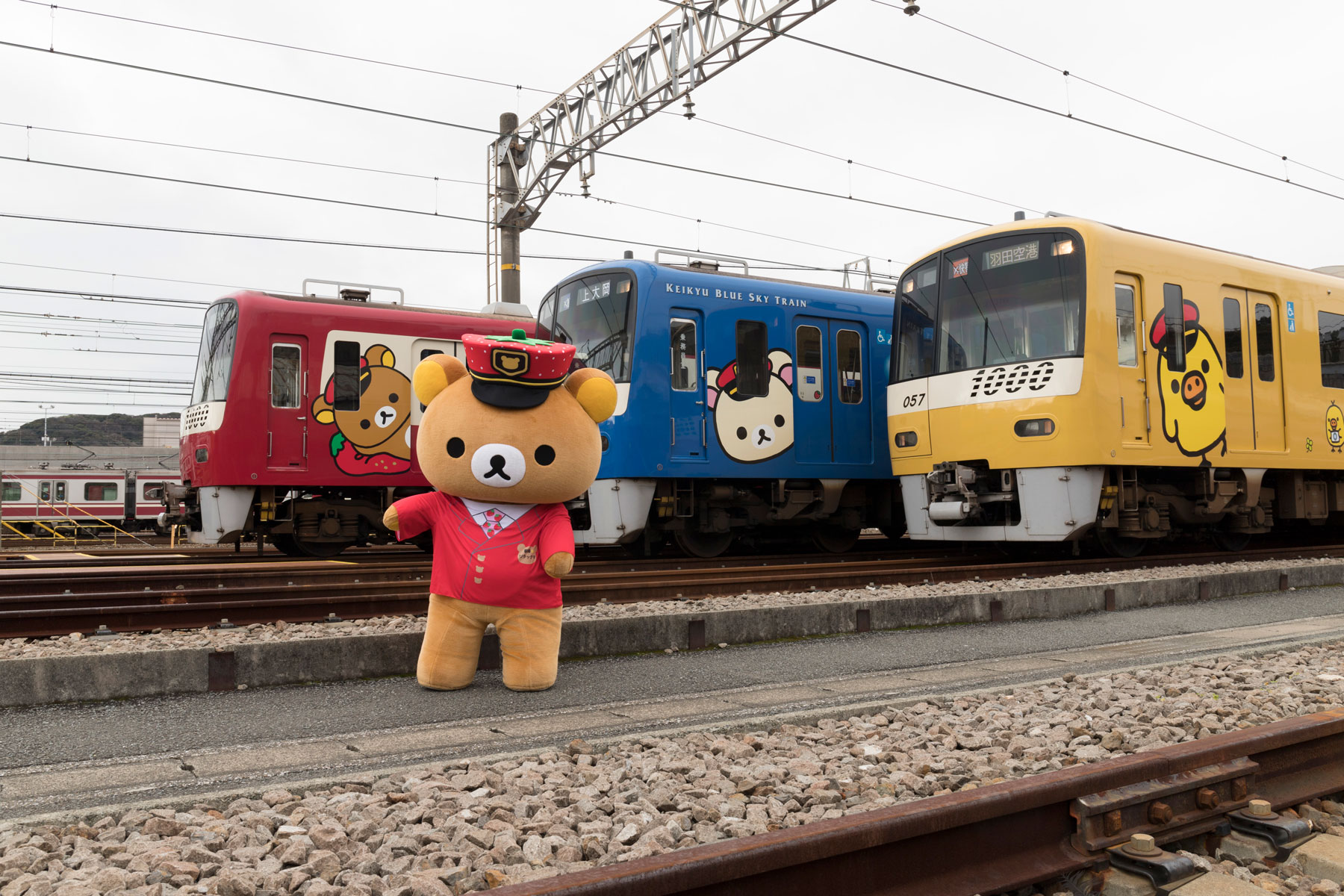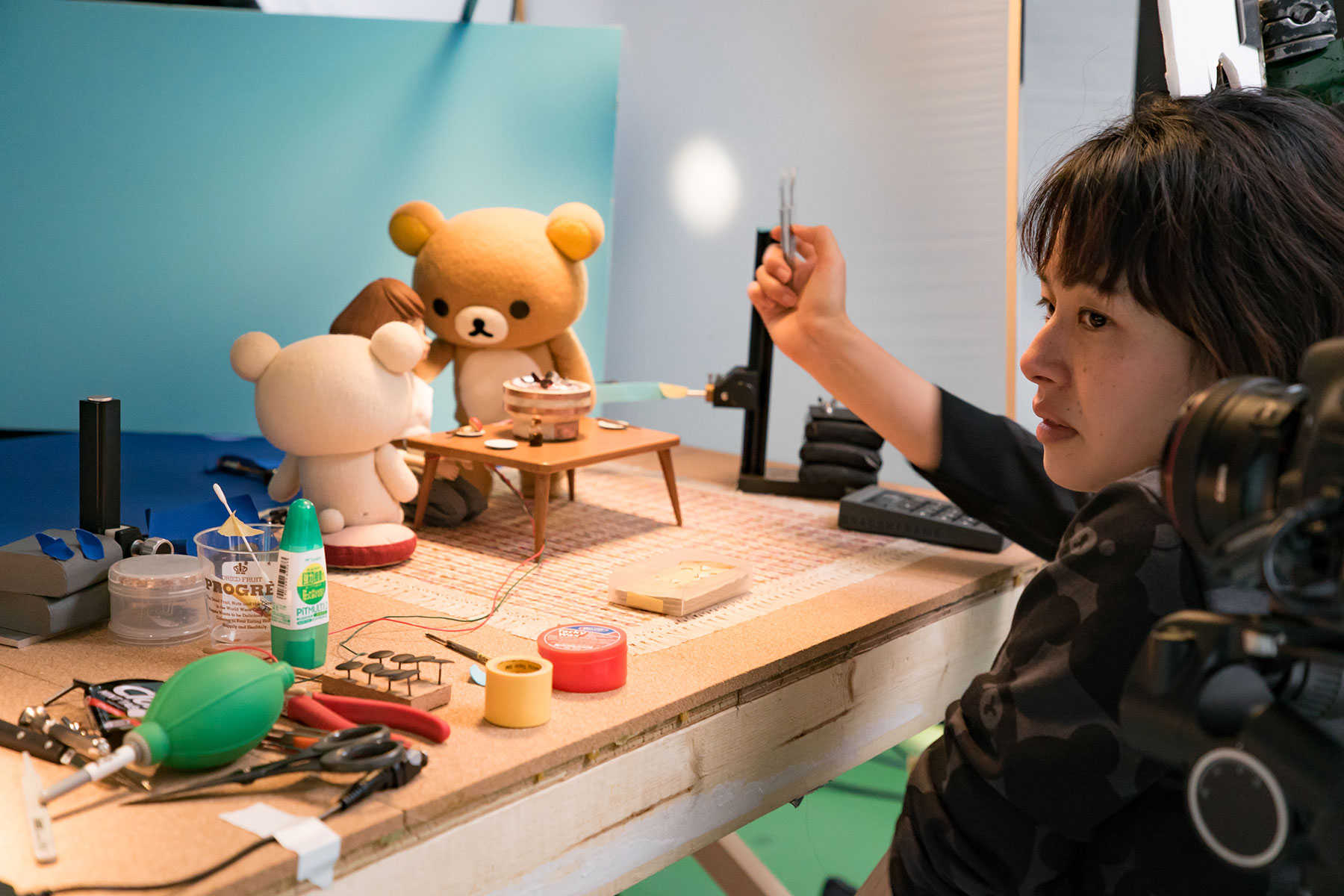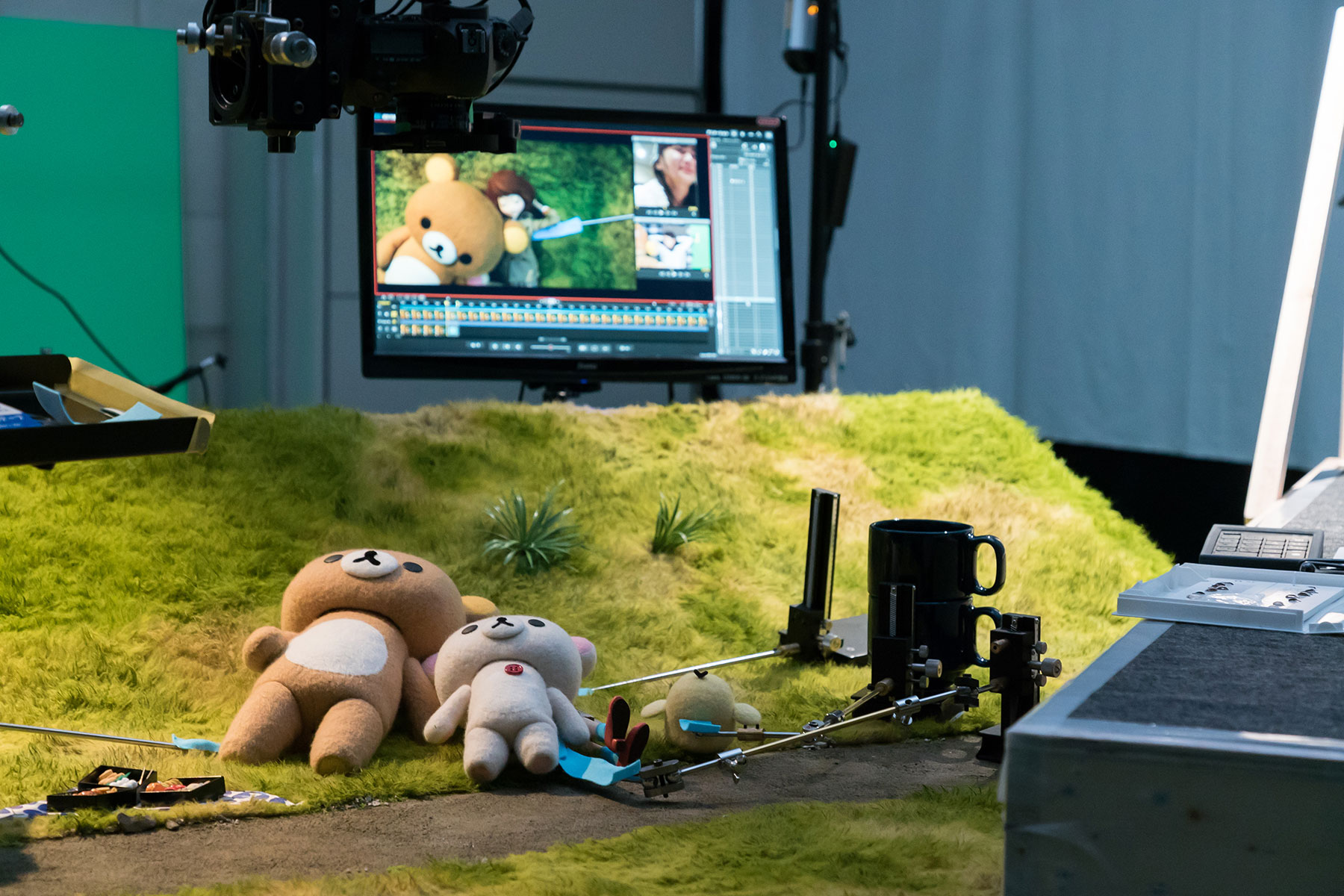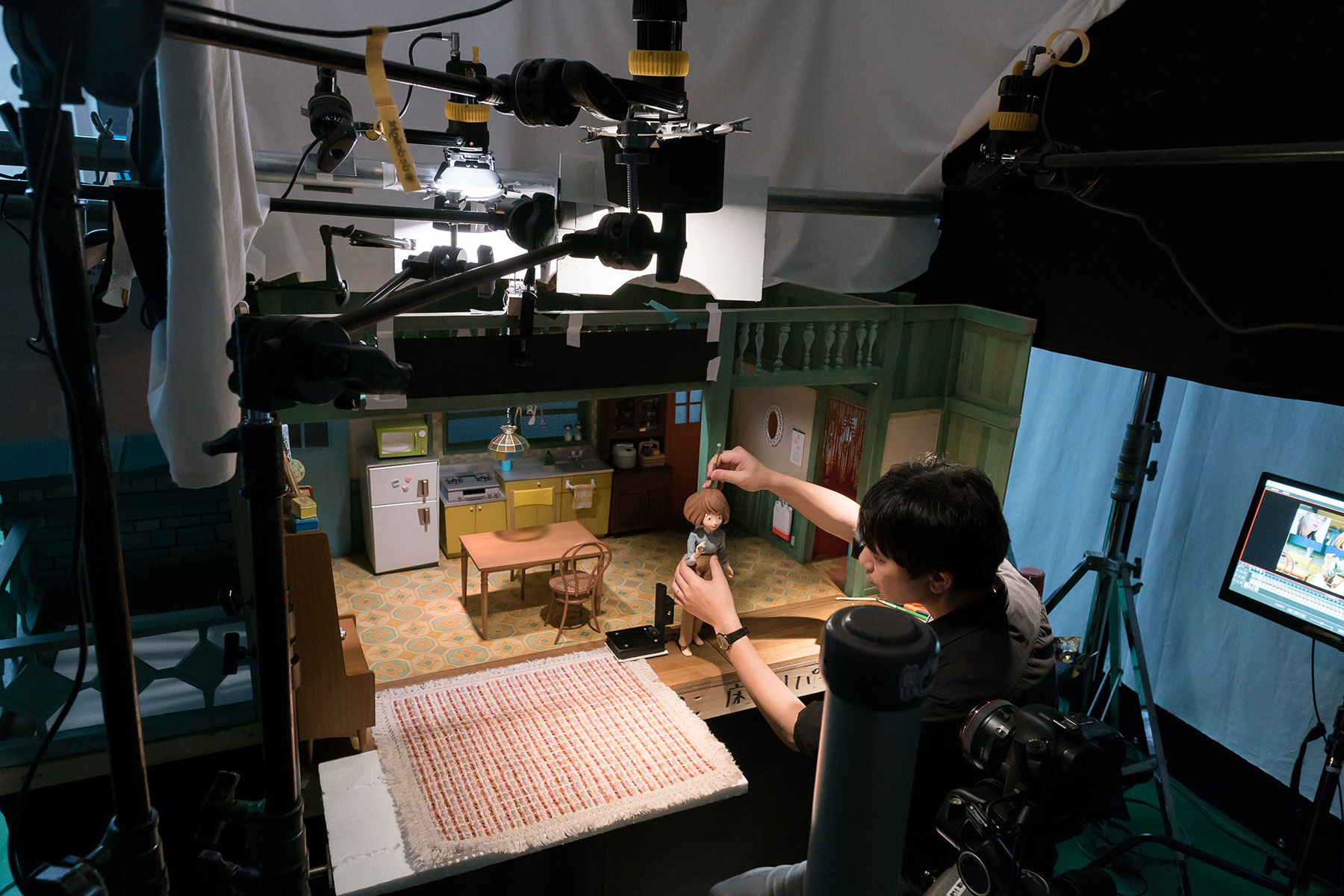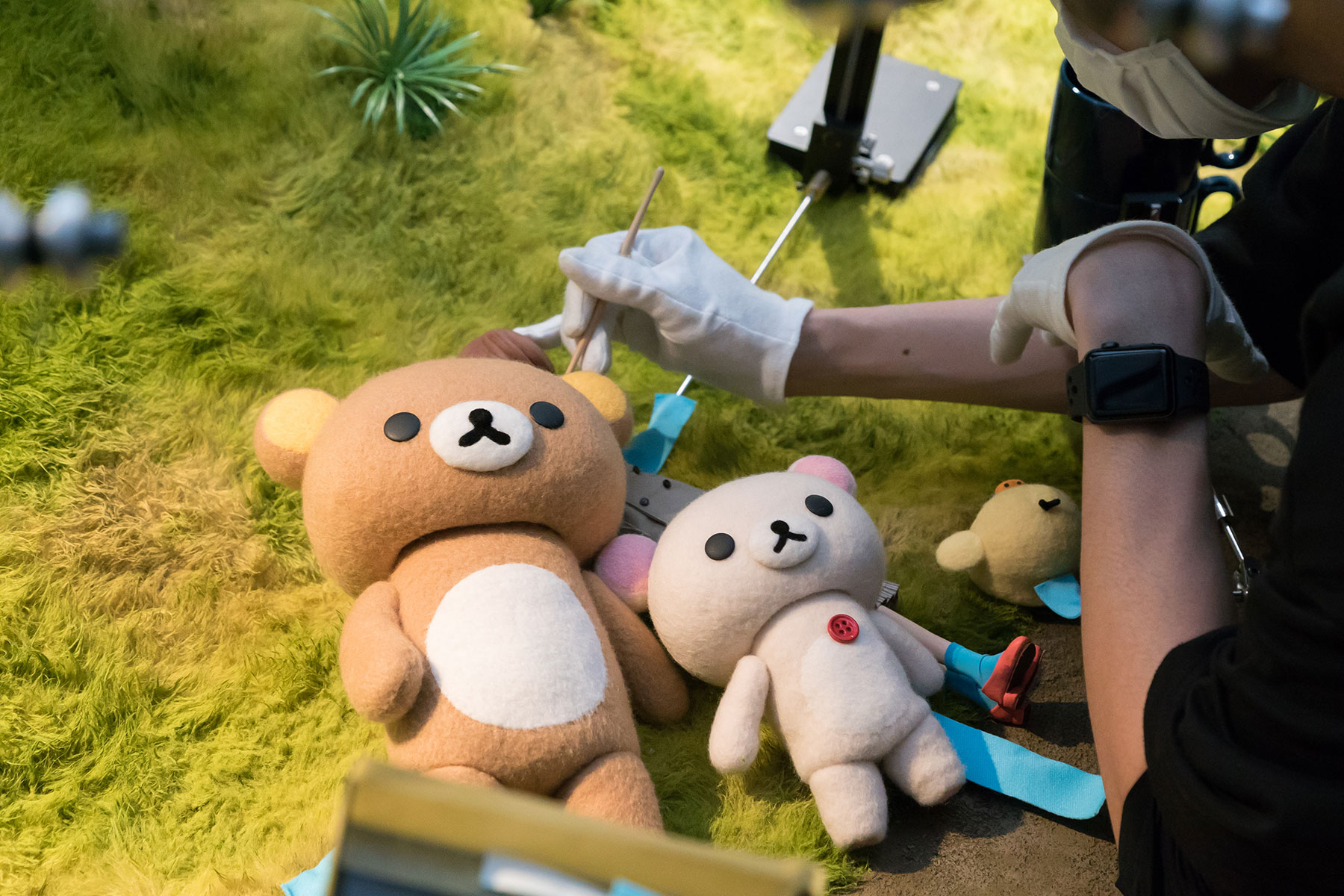CULTURE
Bear essentials
Rilakkuma’s adorablestop-motion debutA scene from Episode 1 of the Netflix program "Rilakkuma and Kaoru" © 2019 San-X Co., Ltd. All Rights Reserved.
A forthcoming animated series on Netflix celebrates Rilakkuma’s lackadaisical ethos in all its glory
PATRICK ST. MICHEL
Contributing writer
Few fictional characters in Japan are as laid-back in their overall approach to life as Rilakkuma.
Created by stationery producer San-X in 2003, the brown bear has attracted a loyal following over the years, rising through the ranks to sit alongside such established characters as Hello Kitty and Doraemon in terms of exposure at home and abroad.
According to statistics, the Rilakkuma brand has been featured on more than 16,000 products, attracting revenue of ¥250 billion by the end of 2016.
The bear and its friends have taken Japan by storm, appearing on everything from pencil cases to train cars. A number of cafes based on the characters have also popped up, serving up burgers and pancakes in their visages.
Such is demand for Rilakkuma products in Japan that it’s probably fair to say that much of the country secretly envies the bear’s apparent lymphatic philosophy to life.
This demand may grow on April 19, however, when Netflix launches an original series titled “Rilakkuma and Kaoru” in 190 countries and territories worldwide.
The 13-episode series celebrates Rilakkuma’s languid ethos in all its glory, focusing on the highs and lows of everyday life in a stop-motion format.
Needless to say, Rilakkuma doesn’t really set out to change the world.
“(The series) actually touches on a very interesting nerve of anxiety around contemporary life: the pressures of social media, the challenges of work — a lot of millennial challenges,” says John Derderian, director of content at Netflix’s Japan & Anime division. “It finds a unique response to these anxieties and those issues are real. These are issues that can lead to depression and challenges in life. And, to be honest, they are issues that are fully global.”
Rilakkuma isn’t quite in the same league as philosopher Noam Chomsky, but “Rilakkuma and Kaoru” does explore the challenges of life in contemporary society, even if they can be as lucid as developing an addiction to online shopping. The Netflix series captures the same easygoing spirit that has helped the character capture hearts at home and abroad.
“The appearance and worldview of Rilakkuma was to be relaxed, and that was presented front and center,” a Japanese character critic calling himself Robato Denirou says. “It’s simply saying, ‘You don’t have to do too much — don’t overexert yourself.’”
A scene from the Netflix program "Rilakkuma and Kaoru" © 2019 San-X Co., Ltd. All Rights Reserved.
Laid-back origins
Illustrator Aki Kondo had always wanted a dog.
Kondo told Yahoo Japan in 2006 that she saw a chihuahua and its owner on a TV show during the height of Japan’s turn-of-the-century pet boom. The chihuahua was spoiled rotten, sleeping on a fluffy futon and possessing an array of accessories. Kondo didn’t just desire the pet, she desired its life —- she wanted to be pampered and relaxed. She started wishing that someone would treat her the same way.
Kondo was working at San-X, where she had created characters such as an anthropomorphic chestnut called Amagurichan and an orange called Mikanbouya. At the time, San-X required its employees to create a new character every month. Forget owning a pet — Kondo could barely find time for herself.
Rilakkuma — a portmanteau of “relax” and “kuma” (Japanese for bear) — emerged from this desire for rest. Kondo told Excite News in 2010 that she gave the bear a slightly sloppy posture because it made her laugh. She believed the bear should appear to be cute but also a little out of place.
The character made its first appearance in a variety of goods produced by San-X, with a four-comic panel titled “Rilakkuma Seikatsu” being published later to flesh out the bear’s background. In the comic, Rilakkuma turns up without much explanation at the home of a female office worker named Kaoru. Joining them is a mischievous white bear named Korilakkuma and a mature yellow bird named Kiiroitori.
The trio spend most of their time lounging around and mooching off Kaoru, who only ever appears as a silhouette in the comics.
San-X initially thought Rilakkuma was too gangly, Kondo told Yahoo Japan in 2006, as the stationery producer had a preference for rounder characters with small hands. And that wasn’t Rilakkuma’s only quirk.
“Rilakkuma has a zipper on its back. As a result, people question exactly what Rilakkuma is,” Denirou says. “This uncertainty gets stuck in people’s minds when they see Rilakkuma. As far as Rilakkuma is concerned, this strange feeling feels good.”
Despite appearing on a variety of stationery products and comics, initial sales weren’t great.
“I saw a Rilakkuma pencil board in a store and I thought, ‘Oh wow, new character,’” Twitter user @oneneazyun recalls. She says she has collected San-X goods since her fourth year of elementary school and is a fan of Rilakkuma stuffed animals, although it certainly wasn’t a case of love at first sight.
“I wasn’t particularly attracted to the character at first,” she says, “but I bought it since it was new.”
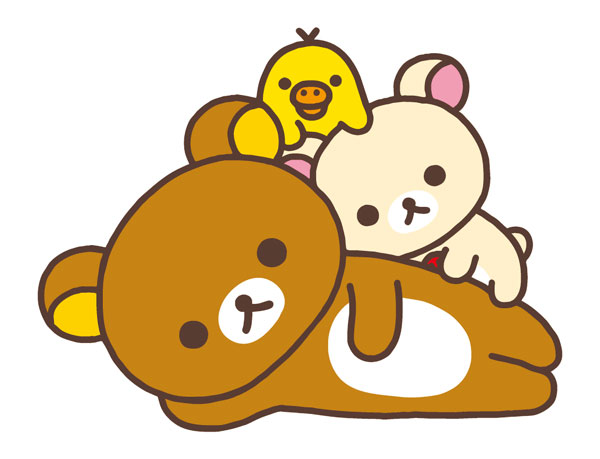
Rilakuma, Korilakkuma and Kiiroitori © 2019 San-X Co., Ltd. All Rights Reserved.
Rilakkuma started attracting attention in 2004, although Denirou can’t point to a specific moment or product that fueled the increase in sales.
Denirou named Rilakkuma his character of the year in 2004, predicting that the bear would only get bigger over time.
Kondo told Yahoo Japan in 2006 that she believed interest in Rilakkuma grew considerably following a decision to place products of the character in UFO catchers nationwide.
“Rilakkuma stood out by breaking the stereotype that insisted that cute characters are always cheerful and energetic,” says Marceline Smith, co-founder and editor of the blog Super Cute Kawaii and author of the forthcoming “The Super Cute Book of Kawaii.” “Rilakkuma has a relaxed introverted personality and a neutral expression that feels sympathetic, whatever your mood.”
From then on, the character has taken on a life of its own. Scores of books starring the bear have been published, while a dozen Rilakkuma retail outlets are now in operation nationwide. A wide variety of brands have produced commercial tie-ups, including with convenience store chain Lawson Inc., several rail companies and SoftBank Mobile, among others.
The character’s success has also led to new challenges and a minor controversy emerged in 2011 when Rilakkuma and friends were set to get their own slot machine. Kondo — who left San-X in the mid-2000s and had transferred ownership of the character to her former employer — objected to the move in a now-deleted blog post. This spurred an early Twitter brouhaha.
Most of the time, new products don’t cause any problems. Twitter user @oneneazyun says San-X’s use of limited-edition Rilakkuma items and themes — totaling almost 100 at present, including coffee, Hawaii and imitations of other bears — keep fans engaged.
“I probably have more than 4,000 Rilakkuma goods, 2,000 of which are small stuffed animals,” she says. “Right now, I have too much stuff. I can’t even squeeze it into my room.”
A scene from Episode 6 of the Netflix program "Rilakkuma and Kaoru" © 2019 San-X Co., Ltd. All Rights Reserved.
Creating a stop-motion world
Director Masahito Kobayashi found it difficult to replicate food while working on the stop-motion animation production of “Rilakkuma and Kaoru.”
Snacks and drinks play a significant role in Rilakkuma’s world, because the bear is constantly consuming something. With stop-motion animation, Kobayashi says you have to create every little prop that viewers see on screen and food products can be particularly difficult.
“Stew was the hardest,” Kobayashi says with a laugh, before more memories come flooding back. “Oh, and pancakes … and omelets.”
Netflix’s “Rilakkuma and Kaoru” attempts to introduce the titular bear to a wider international audience.
Rilakkuma has already made inroads abroad. The character has proven itself to be sought-after in Asia and Rilakkuma products can even be found in North America and Europe, although they’re still not common.
However, Rilakkuma’s debut animated series should bring greater marketing opportunities, both in terms of the number of countries Netflix reaches and the streaming service’s current cultural cache.
The idea first came up at Netflix about three years ago, Derderian says.
“There were some people here (in Tokyo) who were really passionate about the character,” he says. “They really got into the idea. So we made the investment and are really thrilled about how it has come together.”
Kobayashi joined the production crew as director in June 2017, alongside other employees at stop-motion animation studio Dwarf.
“I have a daughter and she is a fan of Rilakkuma,” Kobayashi says. “I once showed her a storyboard. I showed her the edited version and video clips. I wanted to see her reaction and how she would react to it. I think she liked it.”
The team believes it is important to produce a show that can be enjoyed by both children and adults.
Kobayashi didn’t want to give audiences what they expected Rilakkuma to be, but rather see how far he could take the ideas central to the characters. For example, he wanted to use a variety of angles and lighting to capture Korilakkuma’s purity. He drew inspiration from Wes Anderson’s stop-motion films “Fantastic Mr. Fox” and “Isle Of Dogs,” because they were colorful full-length features with a somber undercurrent.
First, however, they had to create Rilakkuma’s world — like, literally, creating all the props and puppets themselves.
“Anime takes a long time to make,” Derderian says, laughing. “Stop-motion anime takes a really long time.”
“The day of shooting is actually a reward in itself, as we finally get to see all these props that we’ve been crafting for hours beforehand come together. We also get to see the animators moving the characters, which starts to make the show a reality,” Kobayashi says.
However, that process takes a significant amount of time. The production team set up 10 separate stages and filmed on them simultaneously.
“We aimed to get 10 seconds of footage a day from each team,” Kobayashi says.
The team also needed to give Kaoru, an almost invisible character in the original panels, a physical presence in the new series.
Kobayashi says Kaoru needed to take on a more leading role in the narrative, basing the storyline around her daily trials and tribulations.
“We had a lot of women on the team who would talk about what kind of complaints they had and proceeded from there,” Kobayashi says.
He also strived for geographical authenticity, creating a detailed city called Ogigaya — a mash-up of Tokyo’s Ogikubo and Asagaya neighborhoods — to serve as the setting for the series.
“I had a detailed idea of what this city would be like and what daily life in that city was like,” he says. “That is, of course, life is not just about smiles and being happy. I wanted to show the duality that exists. Even in the design of the city, it kind of represents the tension between regular life and an office town.”
The result is a visually stunning animation focusing on personal dramas that is a natural fit alongside easy-breezy Netflix offerings such as “Terrace House” and “Tidying Up With Marie Kondo.”
What sets “Rilakkuma and Kaoru” apart from these productions, however, is the simple frustration that life in a big city can produce.
A scene from Episode 6 of the Netflix program "Rilakkuma and Kaoru" © 2019 San-X Co., Ltd. All Rights Reserved.
What people wish they were
Rilakkuma has almost single-handedly changed the course of Japanese character history.
Before 2003, characters in Japan were cute and cheerful, avatars of the most basic definition of kawaii (cute) imaginable. Rilakkuma, however, turned that philosophy on its head.
“San-X was always a weird Japanese character company, compared to Sanrio, and its characters were refreshing at a time when Hello Kitty, My Melody and others felt quite bland in terms of personality,” Smith says. “I feel like Rilakkuma changed kawaii character design enormously. Sanrio has since brought out Gudetama and Aggretsuko, both of whom have more overtly negative personality traits and have, as a result, been very successful.
“San-X’s second-most popular characters are Sumikko Gurashi, a group of characters that feel left out or anxious. These new characters seem to be more relevant for a generation who face greater uncertainty in their lives.”
Rilakkuma helped lay the foundations here.
Denirou says the bear’s worldview serves as a representation of the Yutori generation, referring to Japanese citizens who came of age following education reforms of the late 1980s and ’90s that were implemented to lessen pressure on students.
Denirou adds that it isn’t pure sloth — characters such as the chore-obsessed Kiiroitori add an accent to the world that makes it more inviting — but the main draw is an argument to take it easy and not overdo things.
One Rilakkuma fan posted on a blog in 2012 that the secret to the character was how it had been embraced for its healing functions, especially for women working in offices. Unlike numerous other cuddly creations, Kondo’s character attracted adults from the start.
“I never thought, ‘Rilakkuma is like me.’ I see Rilakkuma more like a panda you’d look at in the zoo,” @oneneazyun says. “It’s more like I live with them, like Kaoru in the book. I think like, ‘Oh I wish I could be like them.’ Plus, I feel relaxed by looking at them. I think that’s one of Rilakkuma’s strengths.”
Kobayashi agrees.
“I think a lot of people see Rilakkuma as a character that represents kawaii, which they aren’t wrong about,” Kobayashi says. “At the same time, however, I believe it is the antithesis of what Japanese society is. Karou is what Japan is like, but Rilakkuma is what Japanese people wish they were.”
This perspective applies to a number of people around the world in 2019. Modern times are defined by terms such as “millennial burnout” and constant financial anxiety. In “Rilakkuma and Kaoru,” such issues pop up and, even though the setting is a fictional take on life in western Tokyo, the stories could apply to almost anywhere on the planet.
And yet, Rilakkuma isn’t here to fix the failings of society or save the world. Rather, the bear has been created to remind people that taking a little time to relax can actually be time well spent.
“Rilakkuma and Kaoru” will be available on Netflix from April 19.


